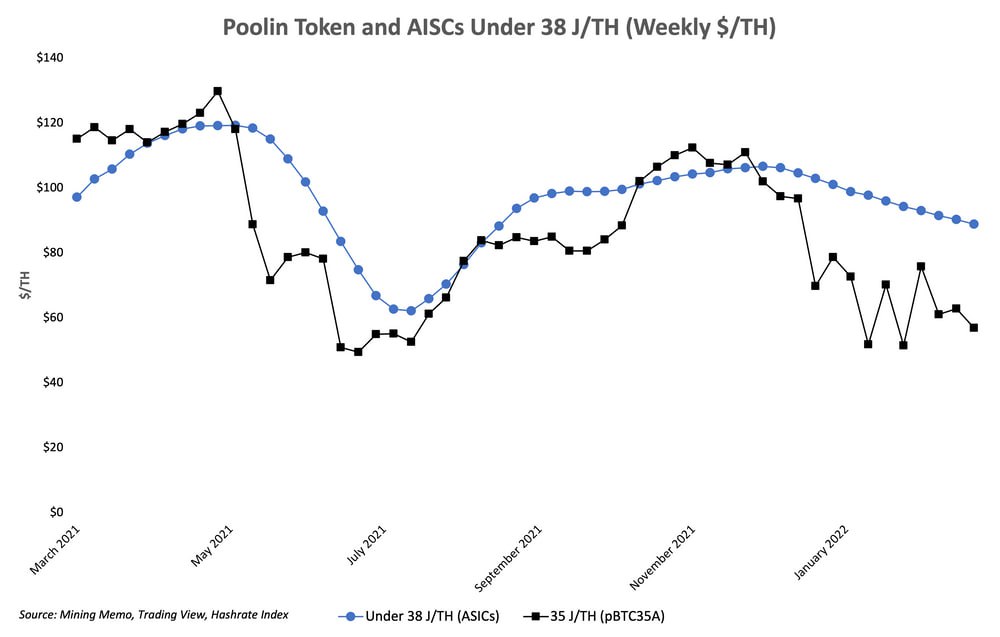If data from the past year is any indication, the perfect hashrate token doesn’t exist.
Hashrate tokens offer a simple method for gaining exposure to Bitcoin mining without the frustrations of setting up an ASIC. But a reflection on price premiums over the past calendar year for the two most popular tokens, Poolin’s pBTC35A and the Binance-backed BTCST token, make the case against the financial product.
pBTC35A
Poolin’s hashrate token launched in early 2021 as a means to bridge the disparate worlds of Bitcoin mining and Decentralized Finance (DeFi).
Functioning much like a dividend paying security – as all hashrate tokens do – the token guarantees the holder to rolling payouts equivalent to 1 TH/s at a machine efficiency of 35 J/TH. In other words, holding 100 or so tokens would be roughly the same payouts expected from one Bitmain S19 over a given period of time.
Like many miners, Poolin faced strong headwinds from China’s mining ban in June 2021. Token payouts were initially suspended for “less than 60 days” in June, although final deployments are apparently still occurring in West Texas, according to a recent tweet from Poolin CEO Kevin Pan.
Poolin’s token has therefore performed poorly when compared to ASICs of similar ranking. Since Jan. 1, the token’s price has struggled against similarly ranked rigs by an average of 30%, according to Hashrate Index. Indeed, the token’s price trailed rigs of a similar class throughout most of last year, minus small premiums during Bitcoin price surges in March-April 2021 and October-November 2021.
Interest in the token is thin and trending downward. At time of writing, volume on Uniswap is only $53,850 in the last 24 hours. Without meaningful volume, it’ll likely be difficult for the token to catch up to ASIC market prices.








